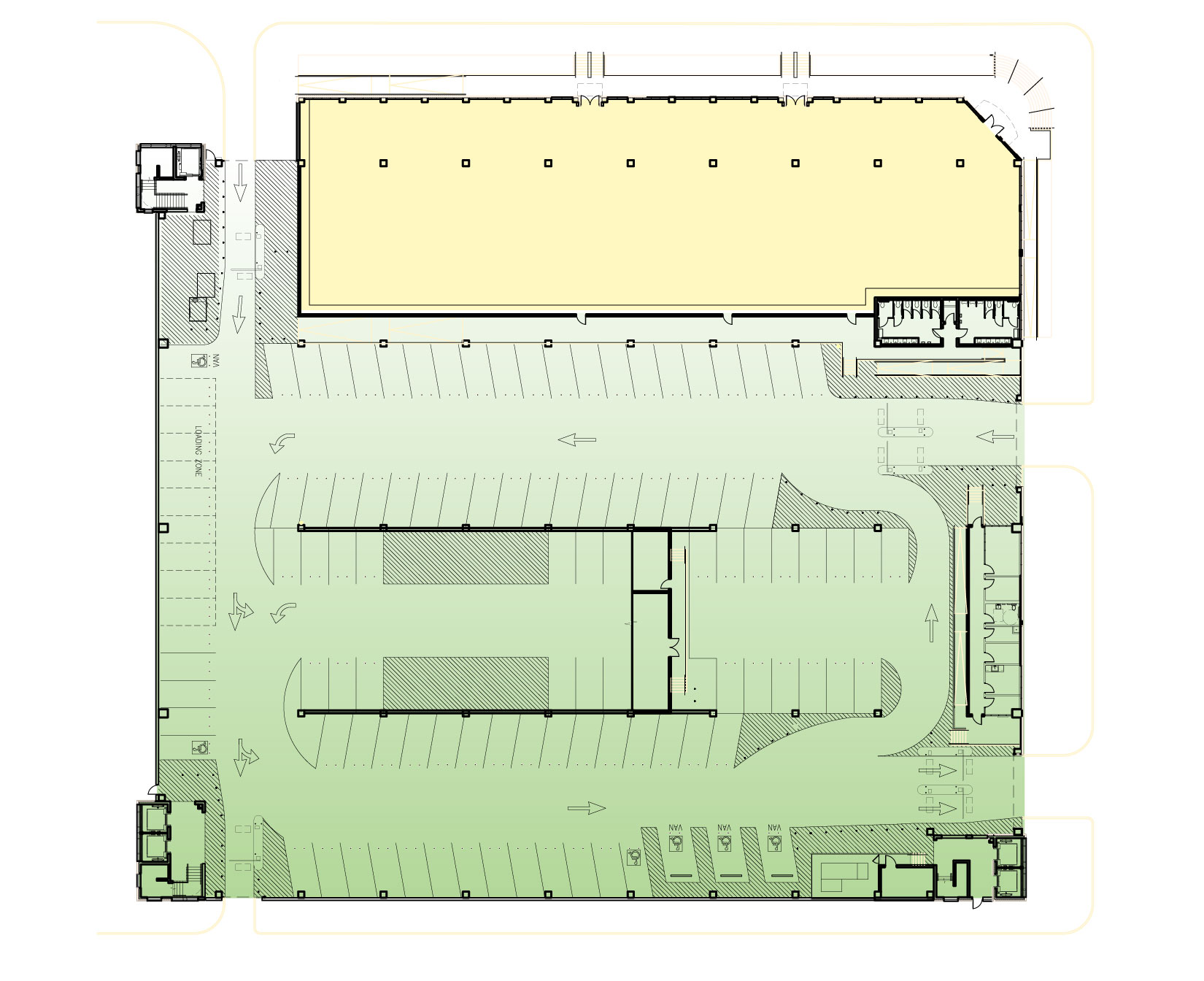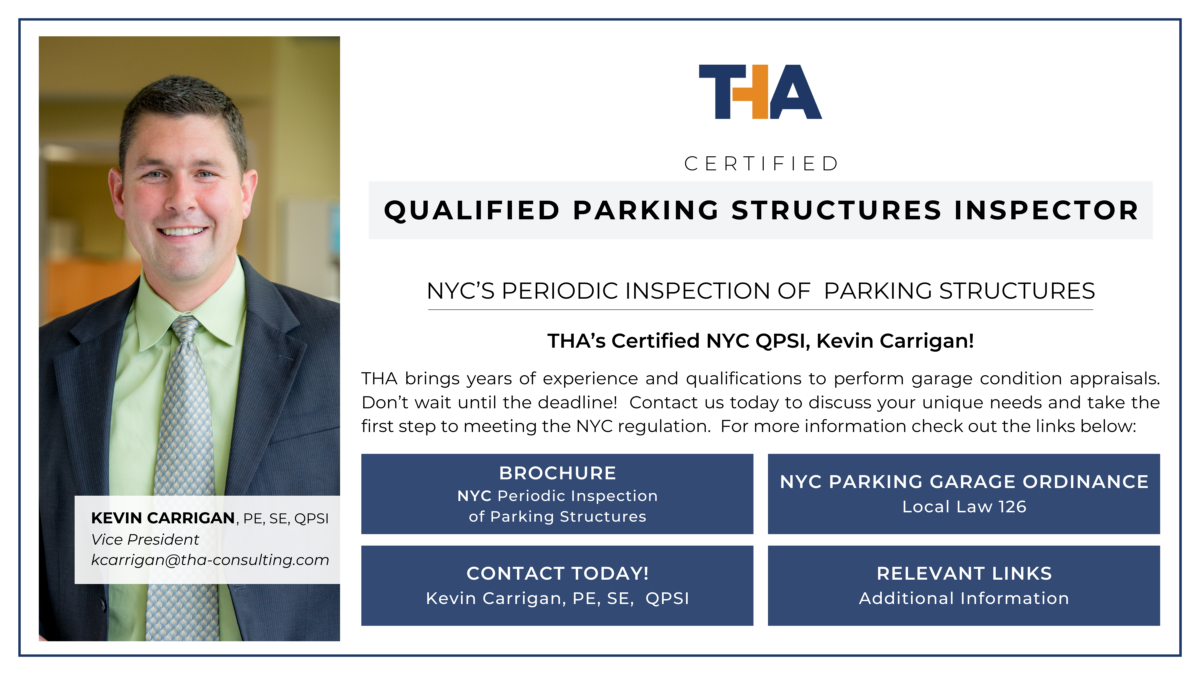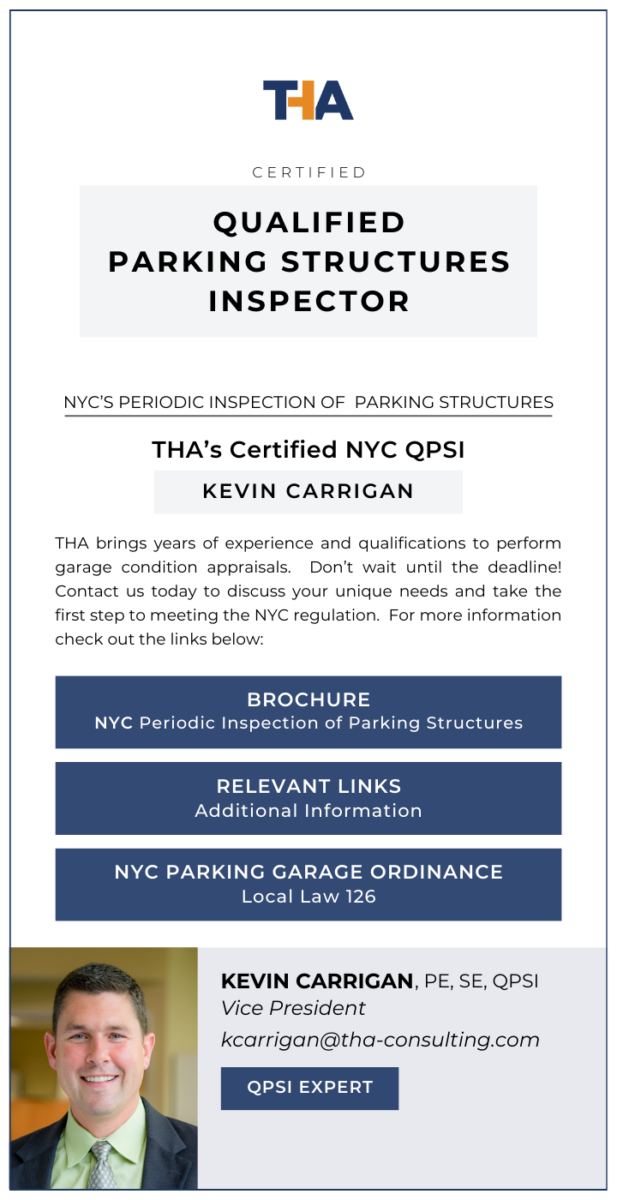What are some typical standards for parking garage functional design?
The best design of a parking facility depends on a number of factors including user, location, federal/state/local codes, building size, functional layout, etc. However, there are typical design standards common in many parking garage designs. The following are some useful standards that may help answer some of your most common questions:
Parking Space Size
Parking space size is mandated by the local zoning or land development ordinances. For example, in Philadelphia commercial districts, the minimum size parking space allowed is 8’-6” x 18’-0”.
The size of parking spaces is based on typical use. A general rule for this is: the lower the turnover, or the more urban a location is, the smaller the parking space tolerated by users. On the other hand, areas with high turnover and which are less urban will generally have larger spaces. However, variances or design waivers are often sought for parking space dimensions when conditions justify the design.
Vehicle Width vs. Parking Space Width
In a basic self-park scenario, a standard stall measures 8 foot and 6 inches. An average car’s width is 6 foot 6 inches. Therefore, if a car parks in the center of the space, they should have 1 foot of room on either side. When two cars park side by side, their combined gap becomes 2 feet between the vehicles.
A car door opening clearance is approximately 20 to 24 inches. Adjacent parking spaces share this clearance while vehicles are parked. When a parking space is adjacent to a built wall or structure, a common practice is to add an additional foot of width to the typical parking space size.
Vertical Circulation for Ramps
Ramp slopes with parking generally range from 5% to 6.67% maximum (per Building Code). When additional overhead height is required at a tier, a speed ramp can be incorporated into the design for vehicle circulation. Speed ramp slopes can range from 6.67% to 13%, with appropriate transition slopes included at top and bottom.
When considering vertical circulation, floor-to-floor heights affect the slope percentages of the ramps. The floor-to-floor heights typically range from 10’-6” to 12’-0”. Applicable Building Codes, Accessibility Codes, and local codes dictate the minimum required overhead clearance heights. Typical minimum required overhead clearances are 8’-2” for ADA van accessible parking spaces and 7’-0” for typical spaces and other accessible spaces. In multi-level parking structures, van accessible parking spaces are permitted to be grouped on a single level. If including an ADA drop-off area, the overhead clearance required grows to 9’-6”.
Garage Footprint Dimensions
The minimum dimensions for a garage footprint must consist of two structural bays. Two 60-foot clear parking modules with 2-way traffic and 90-degree parking would result in a width of 123 feet when including applicable structural members. On the other hand, two one-way bays with angled parking would be slightly less wide. When adding additional parking spaces, overall garage width would increase in increments of the established parking module or structural bay.
For general planning purposes, the minimum garage length consists of the ramp plus the turning bays located at each end of the garage. A garage with two-way typically contains 180 feet of ramp, two end bays of 28 feet, and two spandrel widths of one foot. For improved efficiency, the garage design with two-way traffic with end bay parking must have 180 feet of ramp, two end bays of 48 feet, and two spandrel widths of one foot.
Variations of a typical garage layout are sometimes designed based on project requirements or site constraints. For example, when the site is not large enough for a typical length ramp, both structural bays require ramps that meet at an intermediate landing to accommodate overhead height requirements.
A single helix with a two-way circulation design should be limited to five or six tiers because of the number of turns required to pass all the parking spaces and reach the top. However, for a double threaded helix with one-way circulation, the design allows a vehicle to circulate up and then back down without making a 3-point turn at the top. Additionally, a crossover is provided at ramp mid-points to allow vehicles to switch from upward to downward travel, shortening the distance needed to exit the facility.
Accessible Spaces
Typically, accessible parking spaces are a minimum of 8’-0” wide with a minimum 5’-0” wide access aisle. Two adjacent spaces may share the 5’-0” access aisle. Van accessible parking spaces are minimum 8’-0” wide with a minimum of 8’-0” wide access aisle.
Accessible parking spaces should always be in the most convenient location for the user traveling to their final point of destination. Further, when possible, accessible spaces should always be in covered areas.
The above statements are common ADA guidelines. Federal, state, and local codes should always be examined, as they may require additional or alternative design requirements for accessible parking.
*Federal, State, and Local codes govern most of these requirements and should be thoroughly investigated. Data presented herein should be considered guidelines only. For more specific information and assistance with implementation of these guidelines, please contact THA Consulting, Inc. via email at info@tha-consulting.com



